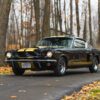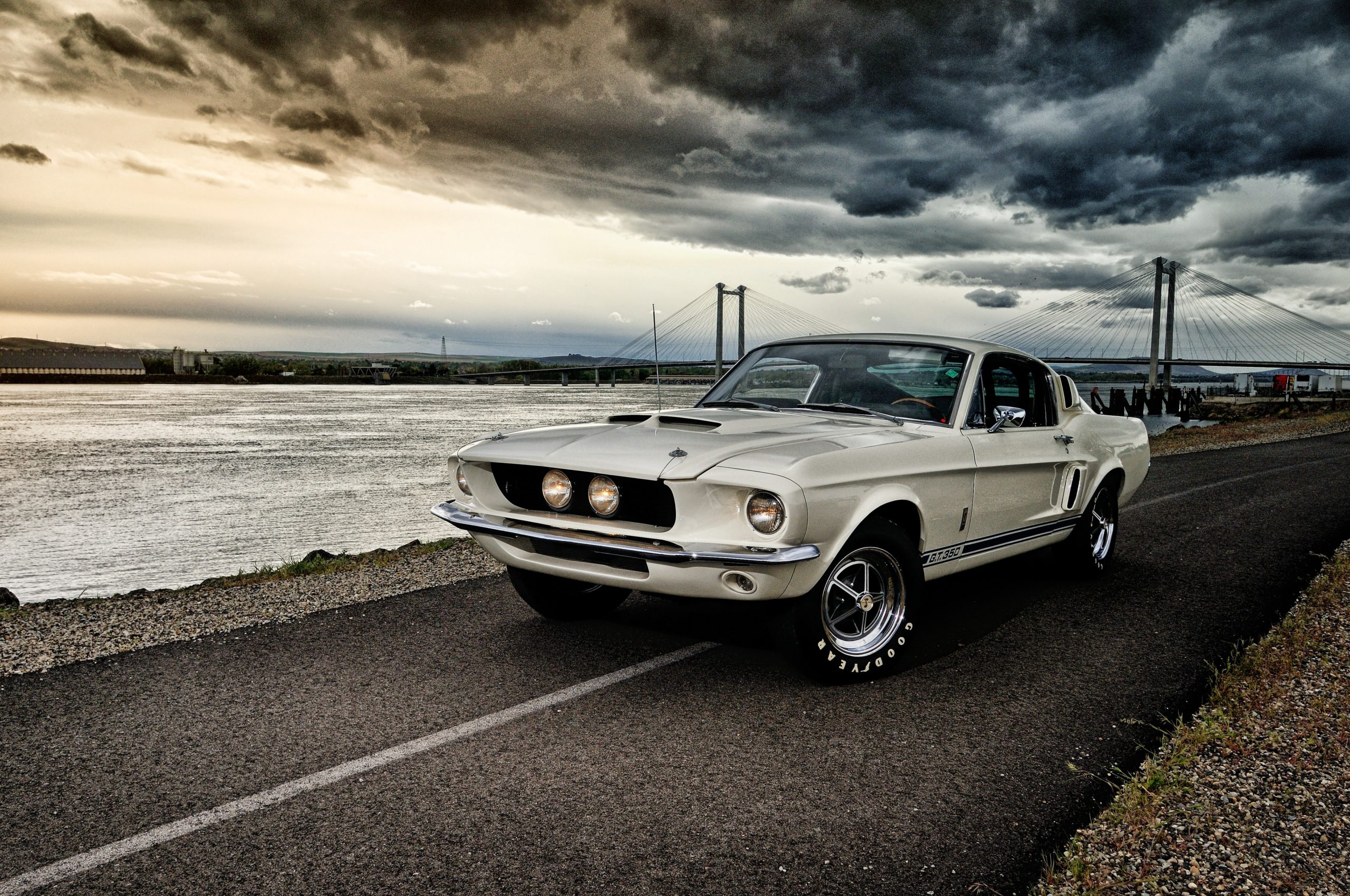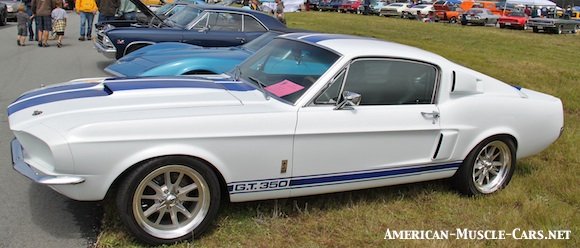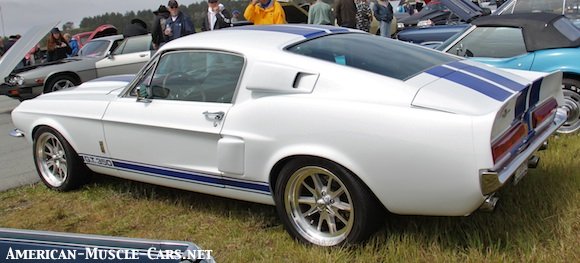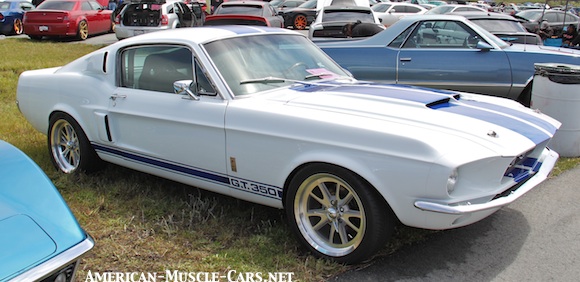1967 Shelby Mustang GT350

1967 SHELBY MUSTANG GT350 BACKGROUND
The Shelby Mustangs were an anomaly. No one else in the industry was doing it. Ford had hired legendary race car building (and driver) Carroll Shelby to turn its popular Mustang into a genuine race car for competition, but also for the street. The 1965 GT350 was the result. That first car was pure, a barely-street-legal race car when it started out. But Ford wanted to sell cars, so by 1966, the GT350 had softened a bit, with a nod to creature comfort.
THE NEW 1967 SHELBY MUSTANG GT350
By 1967, the Mustang was going through its first major facelift, getting softer and more comfortable itself, not to mention about 140 pounds heavier. This was bound to affect Shelby’s baby. Either way, the 1967 model year was the last time Ol’ Shel actually laid hands on any of his namesake Mustangs, there in his busy little shop at LAX in California. By 1968, Ford had taken over full production duties. From here on out, all Shelby Mustangs were pure Ford. The only thing purely Shelby was the name, which Ford paid him generously for.
1967 SHELBY MUSTANG GT350 GETS DETUNED
This was the last year for the venerable 289 V8, a 271hp K-code version under the hoods of the Shelbys. To it was installed a Cobra aluminum hi-rise intake manifold supposedly good for 306hp, however the steel tube headers and straight-through exhaust were replaced with stock items and so horsepower was reduced to somewhere around 250hp, even though Ford continued to advertise it as 306. Power steering and brakes became mandatory options on all Shelbys. Expensive Koni shocks were replaced by lower-priced adjustable Gabriel units. The traction bars and limited slip differential were discontinued. All of these performance-robbing moves plus the extra weight inevitably made the ’67 GT350 slower than its predecessors. But then, that’s what the new GT500 was for.
1967 SHELBY MUSTANG GT350 STYLING CUES
Along with the new body came a whole new look, and one that was meant to differentiate the Shelbys from their more pedestrian Mustang roots. A new fiberglass nose and hood were added, the hood being longer in front, creating a shark-nose effect. It also had bigger hood scoops and race-style hold-down pins. A pair of round high-intensity driving lights were installed in the grille, either together in the center or one on either side, depending upon the state where it was sold. Honest-to-goodness functional scoops were used on the rear quarters to aid in rear brake cooling, and to the roof to aid in ventilation. The fiberglass trunk lid had a “lip” spoiler, and in a bit of parts bin raiding, the tail light assembly was borrowed from the Mercury Cougar. Of course the garish stripes remained, but now you could get your Shelby in a range of colors.
1967 SHELBY MUSTANG GT350 PRODUCTION
The Shelby Mustangs were never volume-sellers, nor were they meant to be. They were expensive, somewhat uncomfortable, and not really suited to daily commuter duty. Interestingly, just as the GT350 got slower (see above), the GT500KR was introduced with its fire-breathing 428 Cobra Jet V8 and it burned up the streets, and the sales charts (as least when compared to GT350 sales). The GT500 handily outsold the GT350 by nearly two-to-one with 2,048 GT500s sold compared to just 1,175 GT350s). But Mustang sales overall were softening, down by 25% from 1966, the inevitable result of their earlier runaway sales success, and the fact that the competition was finally catching up. By 1967, the Mustang was no longer the only game in town. Willing buyers were now plunking down their cash for Chevy Camaros, Pontiac Firebirds, Plymouth Barracudas and even Cougars from their own Mercury sister-division. But with 472,171 total Mustangs sold, it certainly wasn’t all bad.
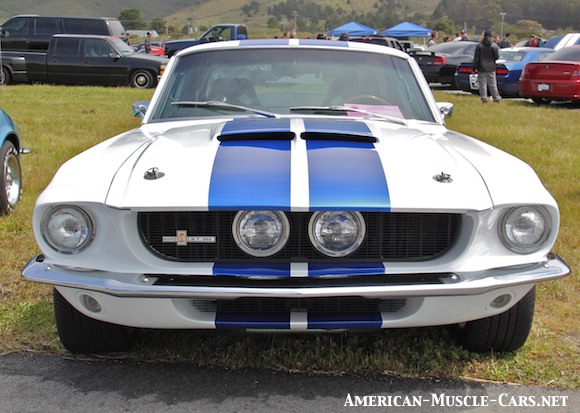
1967 Shelby Mustang GT350 PRODUCTION NUMBERS
| 1967 Shelby Mustang GT350
1967 Shelby Mustang GT500 Prototypes: GT500 Notchback GT500 Convertible Total 1967 Shelby Production |
1,175
2,048 1 1 3,225 |
1967 Shelby Mustang GT350 SPECIFICATIONS
| Wheelbase
Length Width Height Track, front Track, rear Weight Brakes, front Brakes, rear ENGINE SPECS Engine type Engine family Displacement Bore & Stroke Compression ratio Fuel system Power output @ RPM Torque output @ RPM FINAL DRIVE RATIO w/4-speed manual w/3-speed automatic PERFORMANCE Zero-to-60 1/4 mile @ MPH Top speed @ RPM |
108.0 in
186.6 in 70.9 in 51.6 in 58.0 in 58.0 in 3,360 lbs 11.3″ Kelsey-Hayes disks 2.5″ X 10″ drums OHV 90-degree V8 Windsor small block 289 ci / 4.7 L 4.00″ X 2.87″ 10.0:1 1X 600cfm Holley 4-barrel 306 hp @ 6000 rpm 329 lb/ft @ 3200 rpm 3.89:1 3.50:1 4.8 sec 13.6 sec @ 106 mph 133 mph @ 5,000 rpm |



